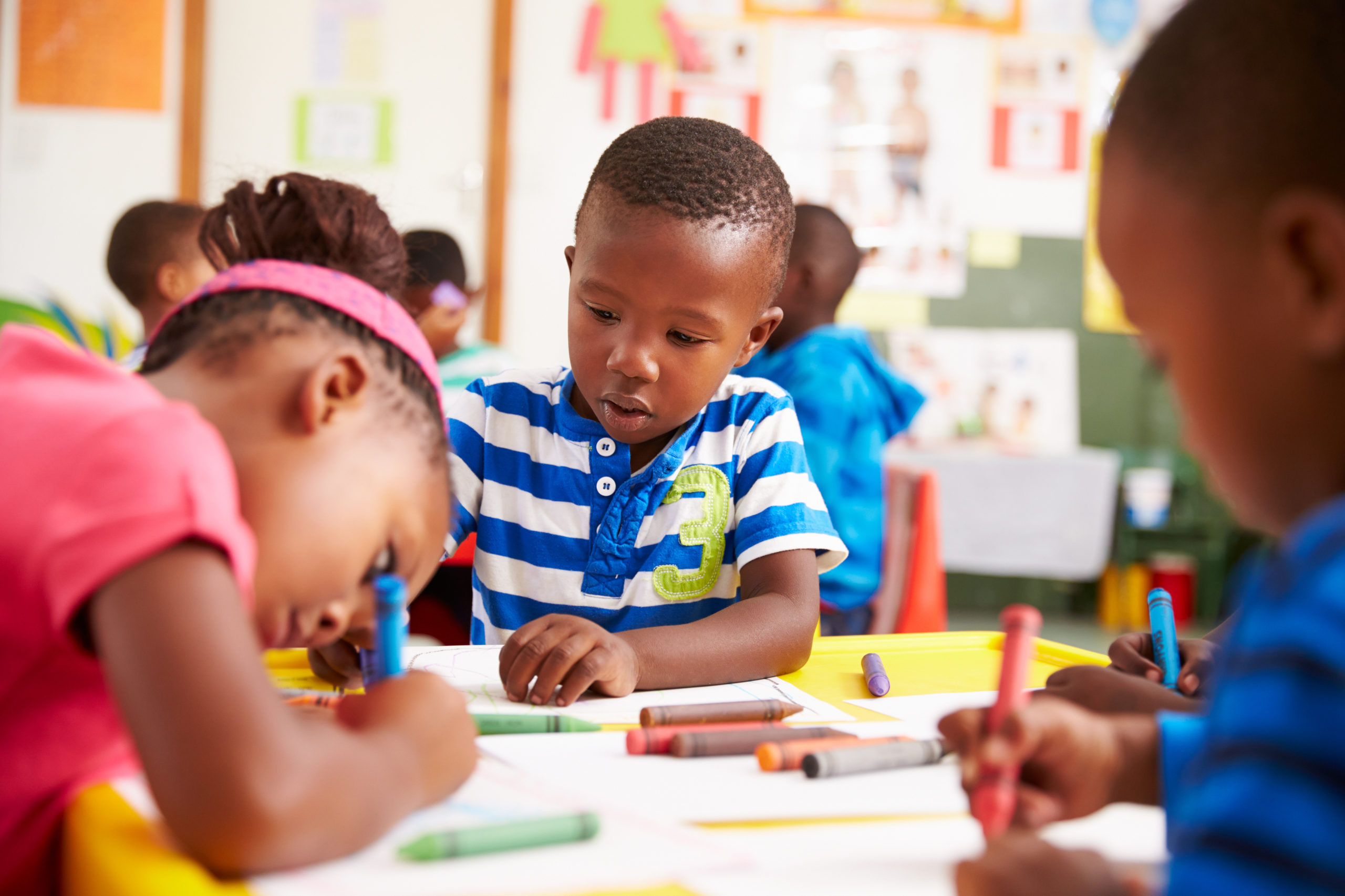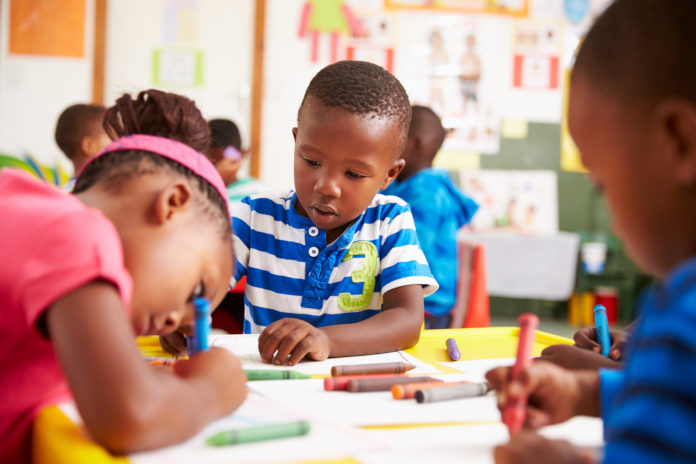By Dr. Watiri Kanyutu
As the new COVID-19 pandemic spread across the world, many countries, including Kenya, announced school closure as a measure to limit the spread of COVID-19. However, recently the government announced that learning could resume in basic education institutions from June, 2020.
Whilst the call to reopen schools is an earnest intention to ensure continued learning, the anxiety amongst the Kenyan school community is how to ensure safe and effective learning, especially in the wake of COVID -19 containment measures instituted by the government.
One of the stringent measures taken to contain the spread of COVID-19 is social distancing. The practice of social distancing refers to the actions taken to restrain the number and extent of contacts, and requires an increase in the physical distance between individuals to minimise the spread of communicable diseases.
It is important to bring to the fore the challenges basic education institutions could face in attempting to implement and enforce social distancing in classrooms, dining halls, dormitories, games and extra-curricular activities and school assemblies.

Classroom Management: Classroom management is a concept used to define a teacher’s role in overseeing everyday issues in a classroom. It also includes any preventive measures taken to ensure that learners have access to a flourishing learning environment.
In the context of social distancing, classroom management may involve; (a) the physical conditions of the classroom, such as the availability and arrangement of furniture, ventilation and lighting; (b) dynamic teaching and learning time, such as the teacher’s use of pedagogical strategies to ensure that learners are constantly engaged throughout a lesson, participate and learn actively, and; (c) the social relations in a classroom such as corporative learning and group activities.
Classroom management significantly affects the process and quality of teaching and learning outcomes. Currently, a classroom in basic educational institutions is expected to accommodate between 35 and 45 learners.
However, there are some schools with as high as 70 learners in a classroom due to free primary education and government’s push for 100% transition to secondary schools. Social distancing requires that learners sit 1.5 meters a part.
This implies that a classroom that ordinarily accommodates 45 learners can only accommodate between 20-25 learners. Schools with limited learning resources such as books have often navigated the shortages through sharing of books during lessons, where learners are required to sit close to each other.
This will now not be possible with social distancing directives. By maintaining the recommended 1.5 meter distance between individuals, one-on-one teacher-learner interactions and collaborative learning such as group discussions could be become difficult to implement.

Dining hall and Provision of School Meals:Besides school boarders who are by default provided meals, the introduction of Free Primary Education (FPE) and Free Day Secondary Education (FDSE) in Kenya means a good number of learners are provided with meals in school. Consuming a healthy diet promotes the overall well-being of an individual.
In children, consuming a healthy meal reduces the risks of malnutrition, increases learning capabilities and decreases morbidity. School meals provide numerous benefits to learners, the society and a country.
According to the World Food Programme (WFP), providing school meals to learners contributes to six of the 17 Sustainable Development Goals (SDG). These SDGs are; end poverty (SDG1), no hunger (SDG2), quality education (SDG4), gender equality (SDG5), decent work and economic growth (SDG8)and reduced inequalities (SDG10).
Empirical evidence suggests that when food portions are well planned, school meals contribute directly to SDG2, SDG4 and SDG5. Unfortunately, disrupted learning through school closures due to COVID-19 placed many learners at the risk of malnutrition.
School closure has impacted on the meals distribution in schools, especially for learners who depend on school meals programmes. Continued learning may be a blessing in disguise for many vulnerable school going children and their families. However, schools could face challenge of ensuring that learners maintain physical distance in an orderly manner during meal time.
Dormitory (accommodation) Management:The Subsidised Free Day Secondary Education Policy in Kenya has enabled learners to attend affordable boarding schools. In the subsidised model, the government pays the learner’s tuition fee, while the parents are required to meet other necessities such as transport, lunch and boarding fees.
Boarding schools symbolise essential settings for social distancing, because drills that promote the practise protect susceptible learners and limit secondary transmissions from the external environment. However, congestion in some boarding schools could predispose learners to the transmission of COVID-19.
Although learners in boarding school are nearly protected once in school, since they are not in contact with the outside school community, a communicable disease such as COVID-19 could be fatal, should a learner be identified to have contracted the virus.
Social distancing in almost congested dormitories is a concern for school management, should a boarder come into contact with an outsider who may be infected with the virus.
Management of Extra-curricular activities:Besides the primary role that schools play in providing education, they provide the best and ideal environment for social inclusion. Empirical evidence suggests that the participation of school-based extra-curricular activities provides learners with a feeling of ownership, belonging and self-development. One of the National Goals of Education in Kenya is to promote individual development and learners’ self-fulfilment.
Schools are therefore required to provide opportunities for and encourage learners to participate in extra-curricular activities that are in line with the learners’ interests and aptitudes. Extra-curricular activities include arts and sports, clubs such as debates, mentoring, gardening, theatrical and musical education.
Extra-curricular activities involve learners interacting with each other outside the classroom set-up, though some, for example, debates and remedial activities such as reading and writing may take place indoors.
Depending on the activity, for example, contact sports such as rugby and football, learners are bound to come into contact with each other. In cases where these activities involve inter-schools participation, learners are expected to travel and inevitably required to mingle with learners from other regions around the country.
The requirement to social distance in vehicles also implies that the transportation of learners to the various locations of participation may require extra allocation of resources.
Significantly, extra-curricular activities outside the school environment puts learners, their supervising teachers and the general public at risk of transmitting the virus.
In cases where learners come from abusive and ‘dysfunctional’ homes, interacting with other learners through extra-curricular activities is the only setting where learners can socialise. Social distancing is, therefore, likely to cause psychological distress and low morale, impaired psychomotor development and compromised academic achievement to some learners.
From the foregoing it is evident that a discrepancy between number of learners and available learning and teaching resources could pose a great challenge to school management in implementing social distancing guidelines in basic education institutions.
Furthermore, poor infrastructural facilities drastically compromise the safety and resilience of schools. In schools where physical facilities lack, the question of whether the lives of learners and teachers are put at risk arises.
Although the government, World Bank and other international financial institutions have greatly invested in billions of dollars to increase the infrastructural portfolio in schools, these programmes may not be sufficient to meet new resources gaps required to meet the social distancing measures instituted by the government.
Therefore, a need to develop response and resilience policies that minimise exposure to future pandemics, and are appropriate to different contexts in the education sector is warranted.
Recommendations
Reopening schools requires adequate planning and preparedness. It may be prudent for the government and school management to undertake the following even as the date for resumption of learning in basic educational institutions remains unresolved.
Develop health regulations: The well being of learners and the school community must take precedence above anything else. The government should, in addition to offering social distancing support, develop health education code of practice to be followed in schools and that are in line with international health agencies such as WHO and UNICEF. These practices must be approved by the MoH.
The need to practice personal hygiene cannot be overstated. The government can support schools in the installation of hygiene facilities such as hand washing stations dispensers with sanitizer and/or soap and water at the entrance of all school buildings; gate, classes, dining halls, dormitories, lavatories, laboratories, stores, libraries and staff room.
Developing behaviour change materials that sensitize learners to adhere to hygiene and safety measure can go a long way in complementing nation-wide education programme about COVID-19.
Develop and encourage social distancing etiquettes: Protocols that guide learners, staff members and the school community on social distancing measures should be developed.
The protocols ought to be consistent and clarity on whose responsibility it is to provide personal protective equipment (PPE), hygiene supplies for use in schools stipulated in these policies. Regulations to ensure that dormitories and classrooms are rearranged to adhere to universally accepted standards ought to be outlined and shared with the schools.
At the school level, preventable gatherings such as assemblies, extra-curricular activities for example, contact sports and inter-school competitions can be suspended for the intervening period.
Where possible, activities that learners can engage in when not in the classrooms, involve fewer groups and demonstrate life skills, for example, creative activities such as sewing (could be ideal to teach them how to sew cloth masks), gardening, and drawing among others can be encouraged.Schools should conduct regular drills to students on personal hygiene.
Consider phased reopening:Subject to the risk assessment outcome and resource availability, gradual reopening of schools may be considered.
Criteria to use in prioritising this procedure may include (a) learners in the end of cycle, class eight and form four who are scheduled to sit for their final examinations; (b) age, i.e. upper primary, lower primary and pre-primary, which relates directly to the age of the learners and level of understanding of what the COVID-19 pandemic is; and (c) regions; these could be based on areas in the country with fewer cases and/or marginalised regions without access to online learning facilities, those with a high risk of school drop-out cases and where the majority of learners depend on school feeding programmes. A phased and priority based reopening policy could allow for a well-organised use of available resources.
Dr. Watiri Kanyutu holds an MBA and a Doctoral degree in Business Administration from Nelson Mandela University (NMU), South Africa, with a focus on the practice of higher education ranking. Watiri believes that solutions are around us; we just need to look in the right places. She currently works at ACAL’s COVID-19 Think Tank and also lectures at NMU Business School.














